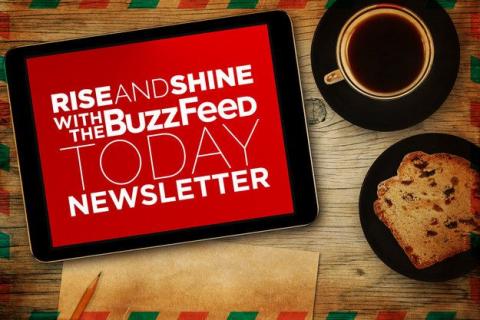THE SECRET WEAPON BEHIND BUZZFEED'S SUCCESS

Chris Ritter / BuzzFeed Newsletter
Written by Gavin O'toole
Still think newsletters are just a quaint addition to your in-house comms policy to let Roger in Purchasing know about the new ping pong tables? Then take a look at BuzzFeed. The tech-driven media upstart famous for putting “You’re fired” in its subject lines is celebrating a $200 million investment – and newsletters have been fundamental to its success. The US media company now boasts in the region of 200 million monthly unique visitors and 1.5 billion monthly video views. It has, as a Forbes writer noted, been “growing like crazy”. In 2014 Dan Oshinsky, BuzzFeed’s senior “newsletterian”, told the Poynter media institute that newsletters were among the “top five or six” biggest drivers of its traffic behind Facebook, Pinterest, Google and Twitter, and newsletter traffic itself was up 700% in 2013.
BuzzFeed understands instinctively the wider value of newsletters to its growth. Admittedly, its news content is very different from the press releases of your average widget manufacturer in Cleethorpes – but the fundamental branding role of its newsletters is similar.
The 2015 State of Marketing report reveals that newsletters are used by marketers most often in email campaigns. According to the Content Marketing Institute’s 2015 Benchmarks, eNewsletters are second in use as a B2B content marketing tactic only to social media content other than blogs.
So just loosen up on the term “in-house” and think brand and relationships. Newsletters can be a marketing power tool that:
-
Raises awareness. A newsletter tells prospects who you are, what you do and how you think. It’s a great way to promote products and shortens the sales process – it adds value;
- Builds relationships. A newsletter fosters a network, allowing you to attract, retain and maintain regular contacts with clients;
- Positions your brand. Customers form an impression about a business from its marketing and communication tools, and a newsletter will help you stand out;
- Establishes authority. A good newsletter positions you as an industry leader by demonstrating your expertise and showing that you are on top of trends;
- Boosts morale. A newsletter keeps staff in the loop, recognises their accomplishments, motivates them, and imbues them with a marketing culture.
Newsletter options come in all shapes and sizes, but inevitably the most common form they take is the email shot. Bulk email is a breeze, cheap and environmentally friendly, but it needs to form part of an e-marketing strategy – and don’t forget the havoc that spam filters can play. Remember, too, that a company newsletter today must be optimised for mobile.
Each format has pros and cons, but there is one unbreakable rule: ensure your newsletter is professional. A skilled “newsletterian” – to borrow Dan Oshinsky’s title – will steer clear of:
- Propaganda – aim to inform and educate staff, clients and your sector with accurate news-led material;
- Negativity – don’t lecture or thump a tub, but highlight positives and offer solutions;
- Procrastination – keep it short, snappy and interesting: boring is definitely bad.
- Inconsistency – readers hate it, so ensure your design and content is consistent.
If you're interested in seeing how Onyx can increase your business with newsletters, please email: Anne@onyx-pr.com
